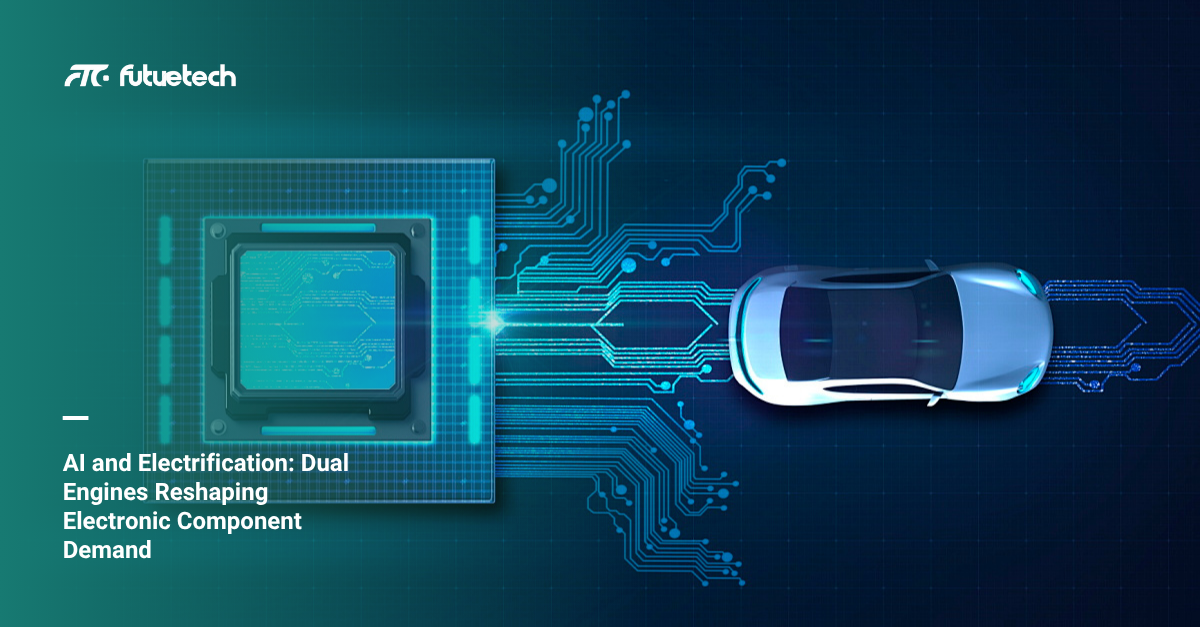The global shift toward digital intelligence and electrified mobility is transforming industries at every level. Two trends in particular—Artificial Intelligence (AI) and Electric Vehicles (EVs)—are reshaping the landscape for electronic components. As systems become more connected and performance-driven, the demand for both volume and technical complexity of components is undergoing a major realignment.
AI Drives Demand for High-Speed, High-Efficiency Components
AI is no longer confined to research labs or data centers—it is moving rapidly into edge devices, smart terminals, and industrial systems. This transition is creating strong demand for:
● High-bandwidth memory and logic chips, essential for real-time processing and machine learning workloads
● Power management ICs (PMICs), designed to support energy-efficient AI deployment
● Passive components like capacitors and inductors with tighter tolerances and greater stability
● Advanced interconnects to meet the needs of compact, high-density system designs
The industry is also shifting toward heterogeneous integration, where multiple types of chips are packaged together to boost performance and reduce power consumption. These new designs require higher precision in supporting components and materials.
Electrification Accelerates Power Device Adoption
At the same time, EV adoption is driving sustained growth in power semiconductors and automotive-grade electronics. Key areas of demand include:
● IGBTs and SiC MOSFETs, essential for EV inverters and power conversion
● Battery management systems (BMS), which depend on reliable microcontrollers and sensors
● Vehicle networks, where stable communication ICs are critical to safety and performance
As vehicles integrate more autonomous and connectivity features, electronic content per car continues to rise. According to industry forecasts, power device demand in EVs is expected to grow at double-digit rates over the next five years, with Silicon Carbide (SiC) becoming a preferred material in high-voltage systems due to its efficiency benefits.
AI and EV Together Raise the Bar for Electronics
When combined, AI and EV technologies are not only increasing total component demand—they're also driving a new level of system complexity. Cars are becoming rolling computers. From central processing units for autonomous driving to AI-assisted diagnostics, the requirements go beyond standard automotive specs.
● Centralized computing platforms are replacing traditional distributed ECUs
● High-speed memory and interface chips are needed to support sensor fusion and edge analytics
● Security, reliability, and long lifecycle support are critical to meeting automotive qualification standards
All of these factors contribute to greater pressure on sourcing, quality control, and supply continuity.
The Evolving Role of the Distributor
In this changing environment, electronic component distributors are playing a more strategic role. The days of simple stock-and-ship models are gone. Today’s customers need partners who can:
● Source across multiple regions and brands
● Offer fast, flexible delivery for varied production needs
● Ensure traceability and screen for counterfeit risks
● Assist in component selection, cross-referencing, and lifecycle planning
With longer lead times and shifting product cycles, a capable distributor helps reduce operational risks while keeping innovation moving.
Conclusion: Futuretech Components—Your Reliable Bridge to AI & EV Supply Needs
As a specialized distributor of electronic components, Futuretech Components closely tracks developments across AI computing and vehicle electrification. We provide a broad portfolio of quality-assured components spanning mainstream AI platforms and automotive-grade requirements. Through our global supply network, we offer customers flexible sourcing, cross-reference support, inventory solutions, and risk mitigation services.
In this new era where compute power meets clean mobility, Futuretech is committed to building a stable, efficient, and trustworthy supply chain ecosystem with our global partners.


